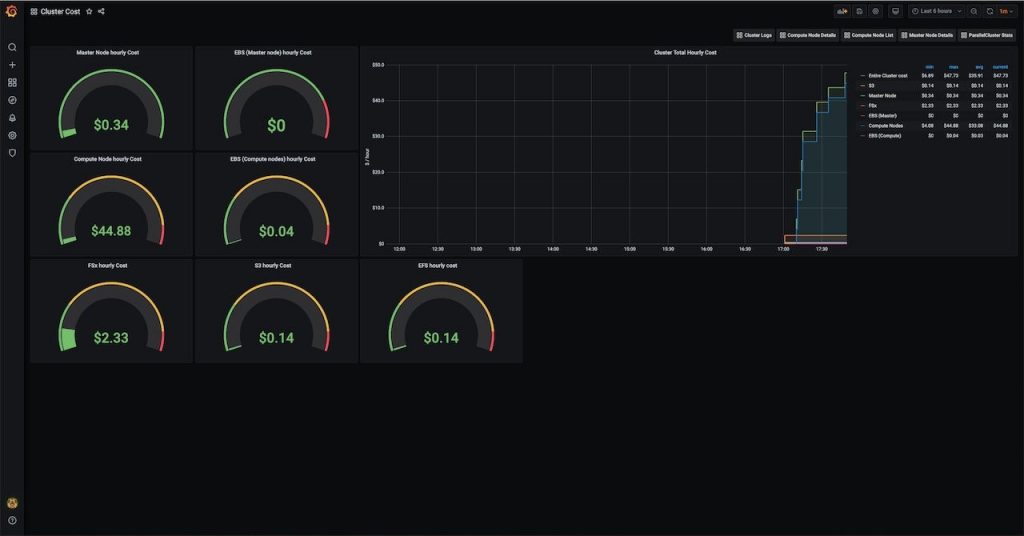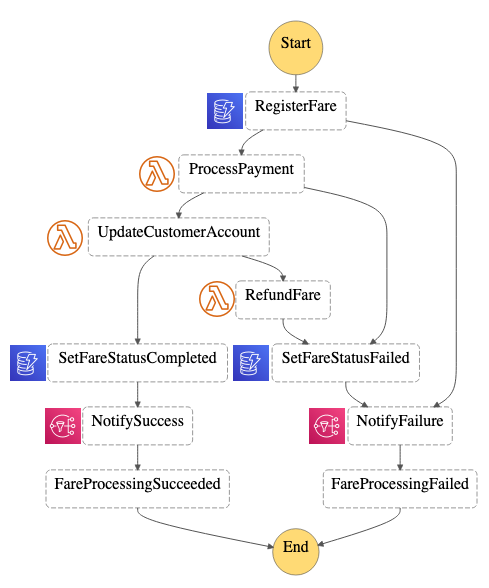AWS Compute Blog
Category: *Post Types
Introducing Spot Blueprints, a template generator for frameworks like Kubernetes and Apache Spark
This post is authored by Deepthi Chelupati, Senior Product Manager for Amazon EC2 Spot Instances, and Chad Schmutzer, Principal Developer Advocate for Amazon EC2 Customers have been using EC2 Spot Instances to save money and scale workloads to new levels for over a decade. Launched in late 2009, Spot Instances are spare Amazon EC2 compute […]
Using Amazon SQS dead-letter queues to replay messages
This is courtesy of Alexandre Pinhel, Specialist SA Manager, in collaboration with Guillaume Marchand and Luke Hargreaves, Solutions Architects. Amazon Simple Queue Service (Amazon SQS) is a fully managed message queuing service. It enables you to decouple and scale microservices, distributed systems, and serverless applications. A commonly used feature of Amazon SQS is dead-letter queues. The […]
Monitoring dashboard for AWS ParallelCluster
This post is contributed by Nicola Venuti, Sr. HPC Solutions Architect. AWS ParallelCluster is an AWS-supported, open source cluster management tool that makes it easy to deploy and manage High Performance Computing (HPC) clusters on AWS. While AWS ParallelCluster includes many benefits for its users, it has not provided straightforward support for monitoring your workloads. […]
Application integration patterns for microservices: Orchestration and coordination
Using Wild Rydes, I show how to use Amazon SQS and AWS Step Functions to decouple your application components and services. I show you how these services help to coordinate and orchestrate distributed components to build resilient and fault tolerant microservices architectures.
Managing your AWS Outposts capacity using Amazon CloudWatch and AWS Lambda
This post is authored by Carlos Castro, AWS Principal Solutions Architect and Kevin Wang, AWS Associate Solutions Architect Customers are excited about using AWS Outposts to bring services and capabilities available on AWS to on-premises for workloads that require low-latency, local data processing, or local data storage. As part of this, the responsibility for managing […]
Getting started with RPA using AWS Step Functions and Amazon Textract
This post is courtesy of Joe Tringali, Solutions Architect. Many organizations are using robotic process automation (RPA) to automate workflow, back-office processes that are labor-intensive. RPA, as software bots, can often handle many of these activities. Often RPA workflows contain repetitive manual tasks that must be done by humans, such as viewing invoices to find […]
Using AWS Lambda extensions to send logs to custom destinations
You can now send logs from AWS Lambda functions directly to a destination of your choice using AWS Lambda Extensions. Lambda Extensions are a new way for monitoring, observability, security, and governance tools to easily integrate with AWS Lambda. For more information, see “Introducing AWS Lambda Extensions”. To help you troubleshoot failures in Lambda functions, […]
Application integration patterns for microservices: Running distributed RFQs
In this blog, I present the scatter-gather pattern, which is a composite pattern based on pub-sub and point-to-point messaging channels. It also employs correlation ID and return address. I show how this is implemented in the Wild Rydes example application. You can use this integration pattern for communication in your microservices.
Integrating AWS Outposts with existing security zones
This post is contributed by Santiago Freitas, AWS Head of Technology EEM and Matt Lehwess, Principal Developer Advocate. AWS Outposts is a fully managed service that extends AWS infrastructure, services, APIs, and tools to your on-premises facility. This blog post explains how the resources created on an Outpost can be integrated with security zones of […]
Announcing Outposts and local gateway sharing for multi-account access
This post was contributed by James Devine, Sr. Outposts SA AWS Outposts enables customers to run AWS services in their on-premises environments. With the release of Outposts and local gateway (LGW) sharing, customers can now configure multi-account access and sharing within an AWS Organization. Prior to this release, an Outpost was only viable within a single […]








